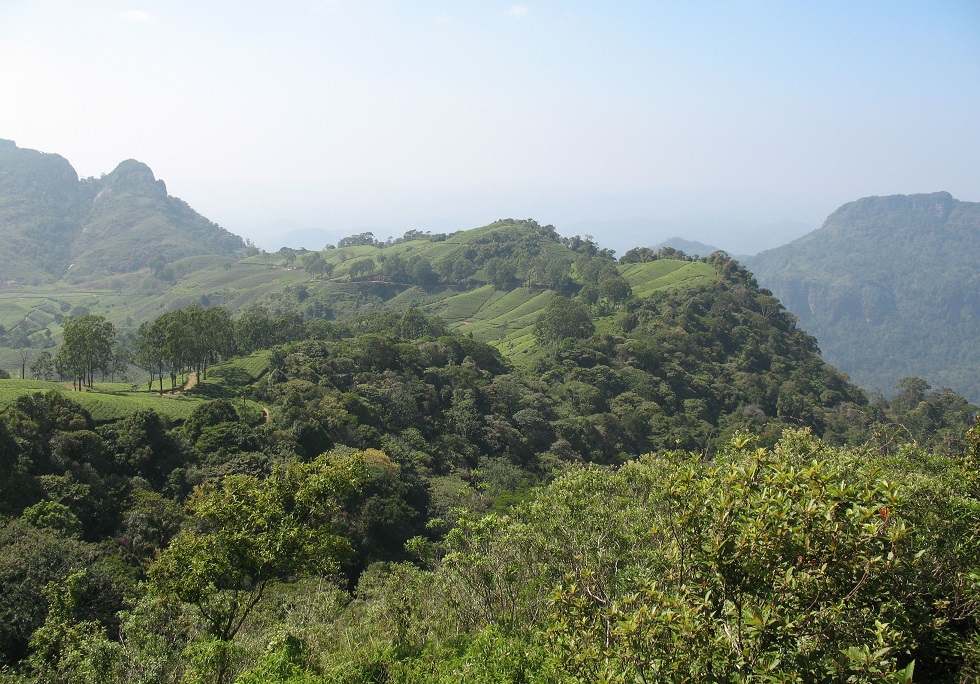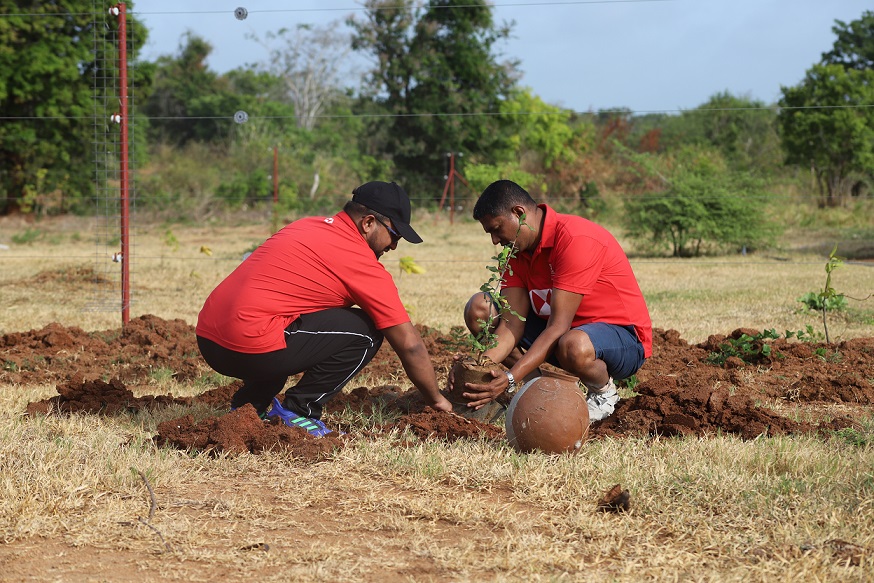IUCN in Sri Lanka teams up with INSEE for another three years to ensure NbS in development
Over the next three years, the IUCN Sri Lanka Country Office and INSEE Sri Lanka, within the framework of the overall global collaboration between IUCN and INSEE will collaborate on the ecological restoration of the limestone mining area in Aruakalu and several other projects using IUCN flagship scientific knowledge products and tools.
Holcim in Sri Lanka had started work on restoring its excavated areas in 1999 without any outside support, which resulted in a single-species dominated forest of Neem or Teak trees and consequently poor faunal species diversity. Within the context of IUCN’s global partnership with Holcim based out of Switzerland, Holcim Sri Lanka sought guidance and expertise from the IUCN, resulting in initiation of collaboration in 2007.
In 2008, IUCN supported Holcim to develop a monitoring protocol and animal translocation methodology, the first of its kind including a quarry rehabilitation and restoration plan, and an annual monitoring plan for the ecological recovery process of the rehabilitated areas in Aruakalu. The first annual monitoring was undertaken in 2009. Despite the fact that ownership was transferred to INSEE in 2016 as a result of Holcim exiting from some of its operations in Asia, monitoring activities continued, resulting in the country's longest annual monitoring of restored areas for a duration of 14 years.
The results from the species translocation work in Aruakalu have been recently replicated in the context of the Moragahakanda development project's animal and plant rescue and translocation phases, as well as in the context of the implementation of the wildlife management plans of the North Central Province Canal Project, North Western Province Canal Project and Yan Oya Reservoir projects. At the moment, species translocation activity is considered one of the major mitigation measures by the Central Environmental Authority and they have applied for the other development projects.
Another major initiative within the scope of this collaboration is the establishment of an artificial reef habitat along Sri Lanka's southern coast. Fifteen artificial dome-shaped structures were deployed at the Unawatuna site in December 2008. In December 2012, IUCN conducted the first survey of artificial reef structures in collaboration with the National Aquatic Resources Agency, and a monitoring protocol was developed for the purpose. The second survey was conducted in 2013 which found a significant increase in coral growth between 2012 and 2013.
The current collaboration includes planning for biodiversity assessment, species rescue and release programmes, and monitoring of the restoration activities with INSEE at the Aruwakalu Quarry site. In addition, there will be joint baseline surveys at Koggala, Serakkuliya mangrove restoration sites, and coral reef monitoring at the Unawatuna and recently built Rumassala coral restoration sites.
The project manager, Mr. Sampath Goonatilake, Senior Programme Officer - Biodiversity at IUCN SL, shared his view on this long-term partnership.
“Despite the arid and hazardous condition of the area, the ground-level implementation of the restoration with IUCN technical contributions has been a huge success, thanks to the commitment of INSEE management and staff.”
“It was initially a learning process that could only be accomplished with a private sector partner that was willing to adapt and change. The knowledge gained from the species translocation missions has been replicated and scaled up to the national level. This is one of the most successful private-sector conservation engagements in Sri Lanka”. he further added.



